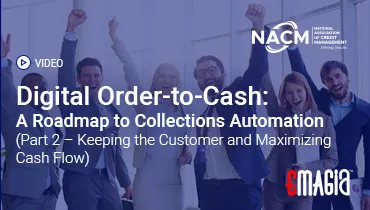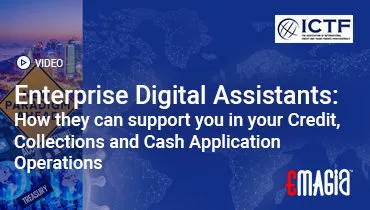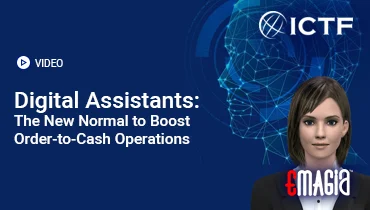In today’s competitive and fast-paced financial landscape, maintaining accurate financial records is not just important; it’s essential. Bank reconciliation, the process of matching a bank’s records with a company’s financial statements, ensures that discrepancies between the two are identified and resolved promptly. With technological advancements, manual reconciliation processes are becoming a thing of the past. Instead, reconciliation software for banks has emerged as a game-changer, offering automation, enhanced accuracy, and improved operational efficiency.
In this comprehensive blog post, we’ll explore everything you need to know about reconciliation software, its benefits, key features, how it works, and why it is an essential tool for modern banks. Additionally, we’ll dive into the best reconciliation solutions available today, showcasing how these tools can help banks and financial institutions streamline their operations.
What is Bank Reconciliation?
Bank reconciliation is the process of matching the balances in a company’s accounting records to those presented on a bank statement. The goal is to ensure that both records align, and any discrepancies, such as missing transactions or errors, are identified and corrected.
Why is this important? For banks, errors or discrepancies in reconciliation can lead to potential fraud, financial misreporting, or inefficiencies in cash flow management. Hence, it’s crucial for financial institutions to perform bank reconciliations accurately and in a timely manner.
The Challenges of Traditional Bank Reconciliation
Before the advent of reconciliation software, banks and businesses had to manually match each transaction listed on their bank statement with entries in their accounting ledger. This traditional approach is fraught with challenges:
- Time-Consuming: Manual reconciliation is tedious and can take hours or even days, depending on the volume of transactions.
- Prone to Errors: Human error is a significant risk in manual processes, which can lead to discrepancies or missed transactions.
- Inconsistent Data: Without real-time updates, reconciling financial records often results in outdated data that can lead to inaccurate financial decisions.
- Limited Scalability: As a bank grows and transaction volumes increase, manual reconciliation becomes increasingly difficult to manage.
How Reconciliation Software Is Changing the Game for Banks
Automation and Efficiency
One of the key benefits of reconciliation software is its ability to automate the entire process. By automatically matching bank transactions with accounting records, reconciliation software dramatically reduces the need for manual intervention, speeding up the process and minimizing human errors.
Real-Time Reconciliation
With automated systems, banks can reconcile their accounts in real-time. This means that discrepancies can be detected and addressed almost immediately, which helps in improving decision-making and ensuring that financial records are always up to date.
Scalable Solutions
Unlike manual reconciliation, which becomes more difficult as transaction volumes grow, reconciliation software is built to scale. Whether a bank is handling hundreds or thousands of transactions, the software can handle the load without sacrificing accuracy or speed.
Enhanced Accuracy and Compliance
Reconciliation software leverages advanced algorithms to ensure that matches are accurate and that discrepancies are identified and flagged for review. Furthermore, many reconciliation tools are designed to meet regulatory requirements, ensuring that financial institutions stay compliant with industry standards and avoid penalties.
Key Features of Reconciliation Software
1. Automated Transaction Matching
Reconciliation software automatically compares the bank’s transactions with the business’s accounting records, flagging any discrepancies for further review. This removes the need for manual matching and significantly reduces the chance of errors.
2. Multi-Bank Integration
Financial institutions often operate with multiple bank accounts, and manual reconciliation can quickly become cumbersome. Reconciliation software supports integration with multiple banks, allowing institutions to manage all their accounts from a single platform.
3. Real-Time Data Processing
With real-time data processing, discrepancies can be detected instantly. Financial institutions don’t have to wait for the next reconciliation period to identify issues; they can address them as soon as they occur.
4. Exception Management
When discrepancies arise, reconciliation software provides detailed information and tools to resolve issues quickly. This includes the ability to flag transactions that don’t match, assign tasks for review, and track the resolution process.
5. Audit Trail and Compliance
Reconciliation software creates an audit trail, logging every action taken during the reconciliation process. This feature ensures that banks can maintain accurate records for regulatory compliance and simplify audits.
The Benefits of Using Reconciliation Software for Banks
1. Increased Accuracy
With automated transaction matching and real-time reconciliation, reconciliation software dramatically reduces the chances of errors. This results in highly accurate financial records, reducing the risk of financial misreporting and fraud.
2. Improved Efficiency
By automating the manual aspects of reconciliation, banks can reconcile accounts much faster, freeing up time for other critical tasks. This increased efficiency leads to faster decision-making and a better understanding of a bank’s financial health.
3. Cost Savings
Banks can reduce operational costs by minimizing the need for manual labor in reconciliation tasks. The software’s efficiency also minimizes the risk of costly errors or discrepancies, which can lead to financial losses.
4. Scalability
Reconciliation software is designed to scale with a bank’s needs. Whether you’re handling hundreds or thousands of transactions, the software can manage the increased volume without impacting performance.
5. Better Compliance
Maintaining compliance with financial regulations is a top priority for banks. Reconciliation software ensures that all transactions are properly documented, creating an audit trail that makes it easier to meet regulatory requirements.
Top Reconciliation Software for Banks: Emagia
In the evolving financial landscape, accuracy and efficiency are paramount. As banks continue to deal with increasing transaction volumes and the complexity of financial data, having a robust and automated solution for bank reconciliation has become a necessity. Among the leading solutions for reconciliation is Emagia, a cutting-edge financial automation platform that revolutionizes the way banks handle their reconciliation processes.
Why Emagia Stands Out for Bank Reconciliation
Emagia is a comprehensive solution designed specifically to meet the needs of banks and financial institutions looking to streamline their reconciliation processes. Unlike many traditional software solutions, Emagia offers a modern, AI-driven approach to reconciliation that ensures both accuracy and efficiency. Let’s explore how Emagia stands out:
1. AI-Driven Automation
Emagia utilizes artificial intelligence (AI) and machine learning to automate the reconciliation process. The AI models continuously learn from transaction patterns, helping to identify discrepancies faster and with greater accuracy than manual or traditional methods. This not only reduces the time required to complete reconciliations but also minimizes the risk of human error.
2. Real-Time Data Processing
One of Emagia’s standout features is its ability to provide real-time data processing. With this, banks can reconcile their accounts as transactions occur, rather than waiting until the end of the month or quarter. This real-time reconciliation capability ensures that discrepancies are caught early and addressed promptly, leading to more accurate financial records and better decision-making.
3. Seamless Integration with Bank Systems
Emagia offers seamless integration with multiple banking systems and software. Whether a bank is using legacy systems or modern digital platforms, Emagia can integrate smoothly with existing tools. This eliminates the need for manual data entry and ensures that data flows effortlessly between the bank’s financial systems and the reconciliation software.
4. Multi-Bank and Multi-Currency Support
For large financial institutions that deal with multiple bank accounts and currencies, Emagia offers multi-bank and multi-currency support. Banks can manage reconciliation across various accounts and currencies on a single platform, ensuring that all financial records are consolidated accurately without the need for multiple disparate tools.
5. Exception Management and Customization
Emagia’s reconciliation software provides advanced exception management capabilities. When discrepancies arise, the platform flags these issues, allowing the bank to address them quickly. The software also offers high levels of customization, enabling banks to set specific rules and criteria for matching transactions, which enhances the accuracy of the reconciliation process.
6. Compliance and Audit Trail
Maintaining compliance with regulatory standards is critical for any financial institution. Emagia’s reconciliation software ensures that all transactions are properly documented, and every action taken is logged in a comprehensive audit trail. This not only helps banks comply with regulations but also simplifies the audit process, ensuring that they are prepared for internal or external audits.
7. Scalability for Growing Banks
As a financial institution grows, so does the volume of transactions it handles. Emagia’s reconciliation software is highly scalable, making it suitable for banks of all sizes. Whether a bank is managing a few hundred transactions or processing thousands on a daily basis, Emagia can scale its operations to meet the growing demands, ensuring consistent and accurate reconciliation.
8. Cloud-Based Flexibility
Emagia operates on a cloud-based platform, which means it offers flexibility and accessibility. Bank staff can access the software from anywhere, making it easier for them to collaborate and complete reconciliations in a timely manner, regardless of their location. This cloud infrastructure also provides banks with secure data storage, ensuring the safety and privacy of sensitive financial information.
9. Comprehensive Reporting and Analytics
With Emagia, banks don’t just perform reconciliations – they gain actionable insights. The software provides advanced reporting and analytics tools, enabling banks to generate detailed reconciliation reports and financial analyses. These reports help financial institutions make data-driven decisions and provide transparency to stakeholders.
How Emagia Transforms Bank Reconciliation
Reconciliation processes can be time-consuming and error-prone if handled manually. Emagia transforms this process through the power of automation and intelligent data processing. Here’s how Emagia can benefit banks:
- Efficiency: By automating much of the reconciliation process, Emagia drastically reduces the time it takes to match bank transactions with accounting records.
- Accuracy: With AI-powered transaction matching and real-time data updates, Emagia helps eliminate errors that are often seen in manual reconciliation processes.
- Cost Savings: By reducing manual labor and the risks of costly errors, Emagia helps financial institutions save money while improving operational efficiency.
- Compliance: Emagia ensures that banks stay compliant with financial regulations by providing accurate records and a clear audit trail.
- Real-Time Operations: Banks can reconcile transactions in real-time, ensuring that they have up-to-date financial data at all times.
FAQs
What Is Bank Reconciliation?
Bank reconciliation is the process of comparing a company’s internal financial records with those of its bank to ensure that both sets of records match.
Why Should Banks Use Reconciliation Software?
Banks should use reconciliation software to automate the reconciliation process, reduce errors, improve efficiency, and ensure compliance with financial regulations.
How Does Automated Bank Reconciliation Work?
Automated bank reconciliation software matches transactions from bank statements with accounting records and flags discrepancies for review. It uses predefined rules to automate the matching process.
What Are the Key Features of Reconciliation Software?
Key features include automated transaction matching, multi-bank integration, real-time data processing, exception management, and compliance tracking.
Can Small Banks Benefit from Reconciliation Software?
Yes, even small banks can benefit from reconciliation software. It reduces the manual workload, increases accuracy, and helps them scale their operations as they grow.
By integrating reconciliation software, banks can significantly enhance their financial operations, improve compliance, and gain more control over their cash flow. With a wide array of options available, banks can choose the solution that best fits their needs, ensuring that their financial records are always accurate and up-to-date.
In conclusion, Emagia’s reconciliation software is designed to address the needs of modern financial institutions by automating the process, ensuring accuracy, and improving efficiency. By leveraging AI, real-time data processing, and seamless integration with banking systems, Emagia is helping banks revolutionize their reconciliation processes, reducing errors, saving time, and improving compliance. Whether you are a small regional bank or a global financial institution, Emagia’s robust and scalable solution is the key to optimizing your bank reconciliation process.



